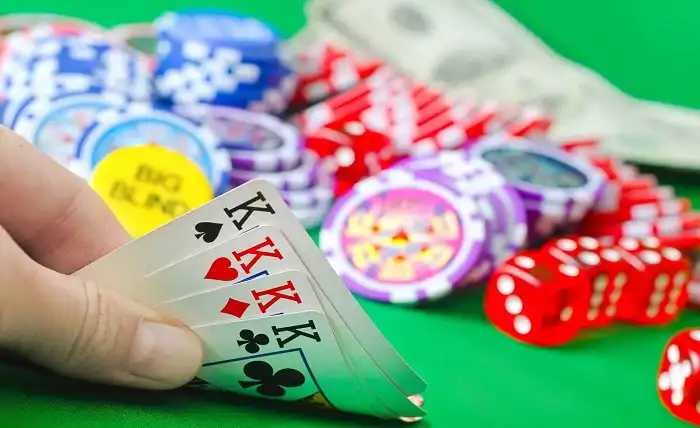
Exploring the Psychology Behind Poker Hands: Bluffing and Tells
Poker, a game that has captured the hearts and minds of players worldwide, is not merely a game of chance. Beyond the shuffle of cards and the clinking of chips lies a fascinating realm of psychology, where players attempt to outsmart one another through strategic gameplay and subtle psychological cues. In this exploration, we delve into the intricate world of poker hands, focusing on the art of bluffing and the revealing nature of tells.
The Basics: Poker Hands and Rules
Before we dive into the psychological aspects, let’s establish a foundation by revisiting the basics of poker hands and poker rules. Poker is a card game where players strive to form the best possible hand based on the combination of cards dealt to them. The hands follow a hierarchical structure, ranging from the high card to the coveted royal flush.
The rules of poker dictate the sequence of betting rounds, with players having the option to check, bet, raise, or fold at different stages of the game. Understanding the rules is crucial, but mastering the psychological dimension can set a player apart.
The Art of Bluffing: Deception in Poker
Bluffing is the cornerstone of poker psychology, where players strategically misrepresent the strength of their hand to deceive opponents. It’s a delicate dance of confidence and subtlety, and successful bluffing requires an understanding of opponents’ perceptions and a keen sense of timing.
A well-executed bluff can turn the tide of a game, even with a mediocre hand. The key lies in convincing opponents that you hold a stronger hand than you actually do. This psychological warfare often involves observing opponents for their reactions, betting patterns, and overall demeanor.
Repeatedly bluffing can make opponents doubt the reliability of your bets, creating an aura of uncertainty around your gameplay. However, bluffing is a double-edged sword; if overused or poorly executed, it can lead to significant losses. Therefore, mastering the art of bluffing requires a delicate balance of risk and intuition.
Reading the Tells: Unveiling Hidden Information
Tells, subtle cues and gestures that betray a player’s emotions or intentions, provide a window into the psychology of poker. Recognizing these tells can give players a significant advantage in deciphering the strength of their opponents’ hands.
1. Eye Movements:
The eyes are often referred to as the windows to the soul, and in poker, they can reveal a lot. Rapid blinking or a prolonged gaze at chips may indicate nervousness or excitement, potentially hinting at a strong or weak hand.
2. Body Language:
A player’s posture, fidgeting, or changes in behavior can serve as valuable tells. A sudden shift in body language, such as leaning forward or sitting back, may reflect confidence or uncertainty.
3. Betting Patterns:
Observing how opponents bet throughout the game can provide insights into their hand strength. Sudden increases in bets or hesitant calls may convey valuable information.
4. Verbal Cues:
Words can be as revealing as actions. Pay attention to the tone, speed, and content of opponents’ speech during the game. An unexpected change in demeanor may expose the true nature of their hand.
The Psychology of Poker Hands: A Mind Game
At its core, poker is a mind game that requires players to navigate the complexities of human psychology. Every bet, fold, or raise is a move on the chessboard of emotions and perceptions. Understanding the psychology of poker hands involves not only assessing your own emotional responses but also deciphering the subtle cues emitted by opponents.
As you sit around the poker table, remember that every decision you make and every chip you place is a piece of the psychological puzzle. The ability to read your opponents and maintain a poker face while strategically revealing or concealing information is the essence of the game.
The Role of Patience and Observation
In the realm of poker, patience is not merely a virtue; it’s a strategic weapon. Patient players can exploit the impatience of others, waiting for the opportune moment to strike with a well-timed bluff or a carefully calculated bet. Moreover, observing opponents over an extended period allows for the identification of patterns and tells that might go unnoticed in a shorter timeframe.
Conclusion: Where Psychology and Strategy Collide
Poker hands are not just combinations of cards; they are a canvas upon which players paint their psychological strategies. The interplay of bluffing and tells adds an exciting layer to the game, turning each hand into a unique chapter in the story of the poker table.
Whether you’re a seasoned player or a novice exploring the world of poker, understanding the psychology behind poker hands can elevate your gameplay. Embrace the nuances of bluffing, master the art of reading tells, and remember that, in poker, the cards you hold are just the beginning of the story. The real narrative unfolds in the subtle interactions between players, where psychology and strategy collide in a dance of deception and revelation.




